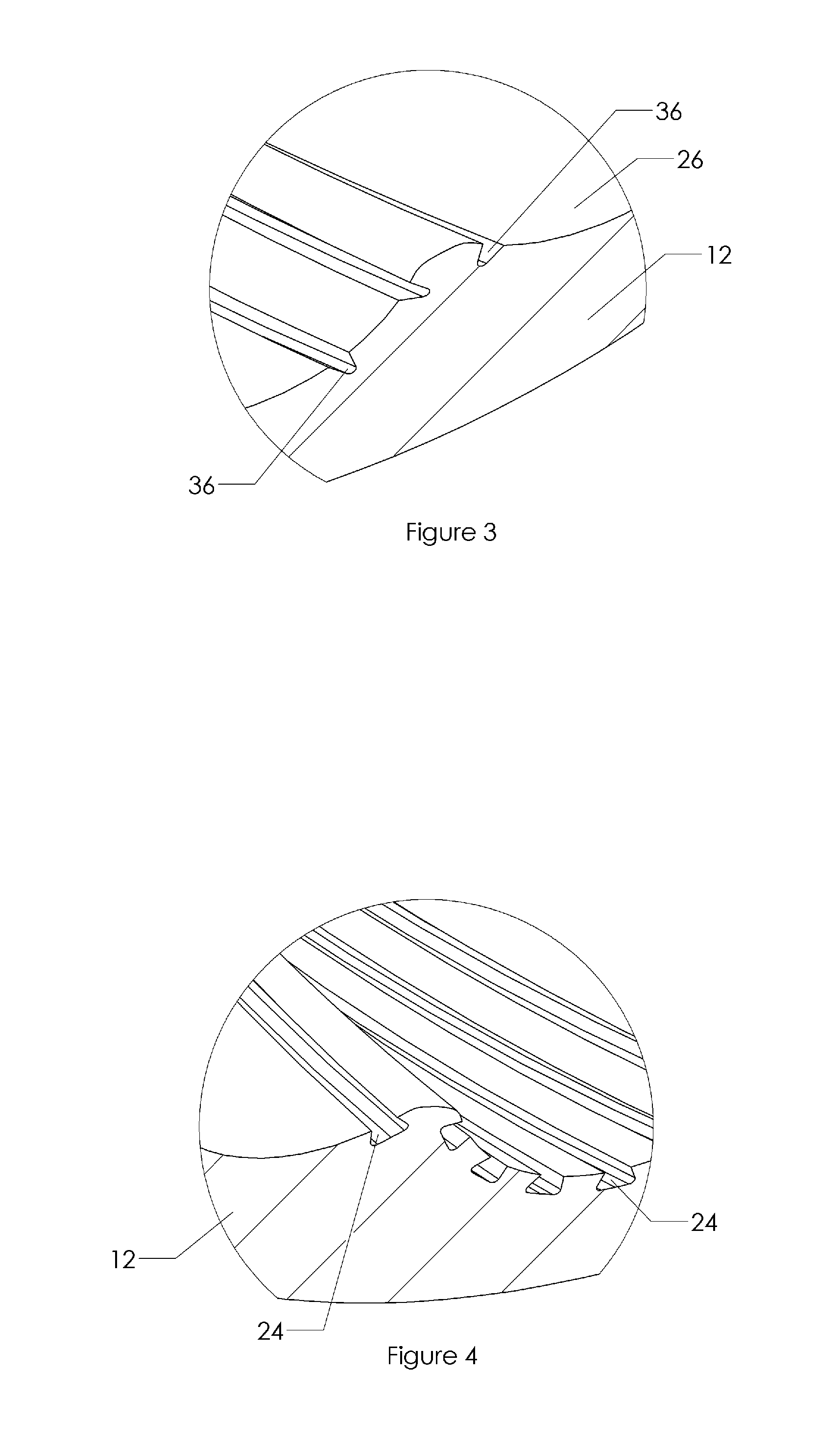Progressing Cavity Pump/Motor
a technology of pumping cavity and motor, which is applied in the direction of machines/engines, mechanical equipment, liquid fuel engines, etc., can solve the problems of limited operating temperature and pressure of progressing cavity downhole pumps and motors, and achieve the effect of improving the operating temperature and pressure of the temperature and pressure of the progressing cavity downhole pump and motor
- Summary
- Abstract
- Description
- Claims
- Application Information
AI Technical Summary
Problems solved by technology
Method used
Image
Examples
Embodiment Construction
[0017]FIG. 8 depicts a progressing cavity pump / motor 10 having an outer rigid stator housing 12, a polymeric layer 14 molded within the housing 12 and a rotor 16 which rotates relative to the housing and the polymeric layer. In a downhole pump application, rotor 16 is conventionally rotated by a rod string extending to the surface, and frequently pumps fluid to the surface. In a downhole motor application, fluid pressure from the surface to the motor rotates the rotor 16, which in turn may rotate a drill bit. For a 1:2 geometry with 1 lobe on the rotor and two lobes on the stator, the exterior of the stator housing 12 may be cylindrical, or the stator housing may have a profiled or spiraling exterior configuration, with an exterior stator surface matching the interior stator profile. While a polymeric layer may have a varying thickness, the benefits disclosed herein are particularly well suited for a polymeric layer with a substantially even rubber thickness (ERT). Conventional desi...
PUM
| Property | Measurement | Unit |
|---|---|---|
| Thickness | aaaaa | aaaaa |
| Width | aaaaa | aaaaa |
| Perimeter | aaaaa | aaaaa |
Abstract
Description
Claims
Application Information
 Login to View More
Login to View More - R&D
- Intellectual Property
- Life Sciences
- Materials
- Tech Scout
- Unparalleled Data Quality
- Higher Quality Content
- 60% Fewer Hallucinations
Browse by: Latest US Patents, China's latest patents, Technical Efficacy Thesaurus, Application Domain, Technology Topic, Popular Technical Reports.
© 2025 PatSnap. All rights reserved.Legal|Privacy policy|Modern Slavery Act Transparency Statement|Sitemap|About US| Contact US: help@patsnap.com



